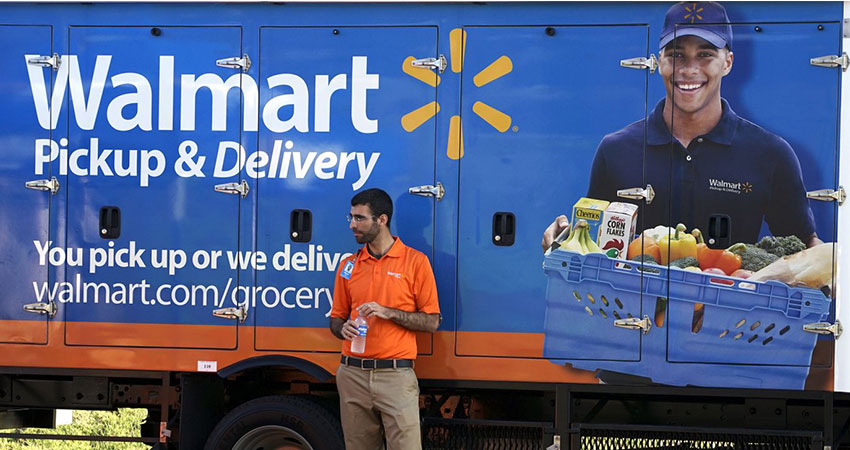After putting it off for four months due to the COVID-19 outbreak, Walmart plans to finally roll out its own $98 a year subscription program this month to challenge the outright dominance of Amazon Prime and its 150 million-plus worldwide members, Recode is reporting.
The service will include access to Walmart’s new two-hour grocery delivery service, but not on an unlimited basis, and to exclusive deals, reserved delivery slots and discount gasoline. It could be launched regionally or nationally, according to Recode. Walmart would not comment on the report.
By contrast Prime, at $119 per year or $12.99 per month, offers unlimited free two-day shipping on over 1 million items, and one-day shipping on 3 million items – when that is actually possible again – access to music and video content, exclusive deals and discounts on purchases at Whole Foods stores, among other perks.
According to Recode, more than half of Walmart’s top spending customers are already Prime members, certainly a concern to the latter’s leadership, as are Amazon’s ongoing efforts to woo Walmart customers in lower income brackets.
Another concern is the potential for Amazon to peel off consumers with this kind of dual citizenship, enticing them to purchase more groceries through Prime — an area where Walmart remains dominant.
Just the reverse is true when it comes to overall ecommerce sales. A report earlier this year from analyst firm eMarketer said Amazon leads U.S. ecommerce sales with a 38.7% market share, dwarfing Walmart in second place at 5.3%.
Brittain Ladd, founder and CEO of Six Page Consulting and a former Amazon grocery strategist, said Walmart can’t win if it keeps mimicking Amazon vs. actually innovating in ways that shape consumer behavior.
“The majority of households in America already have a Prime membership,” he said. “Does Walmart honestly believe these same consumers are going to buy a Walmart+ membership? I am very skeptical that the program will generate much interest and I believe Walmart+ is the next Jetblack.”
A much better strategy for Walmart, Ladd said, would be to acquire or invest in Robomart, creator of an autonomous rolling mini mart that was on display at this year’s NRF Big Show in New York.
“Consumers could hail a Walmart-branded van to arrive at their home loaded with exactly the meals and groceries they want,” he said. “This is a new form of commerce and something Amazon doesn’t offer. Walmart needs to stop competing with Amazon and instead, out-innovate them.”
Andrea Szasz, a principal in the consumer practice with management consulting firm Kearney, said while there is overlap between Walmart’s higher spenders and Prime membership, consumers weren’t very likely to join two similar subscription programs. But Walmart+ is being launched at an opportune time, she said, with so many new online buyers in different demographic groups hunting for something that works for them.
Walmart+ could be a winner if done right, Szasz said, including aligning the value proposition with Walmart’s key differentiators (ubiquity of stores, everyday low prices, broad grocery offering).
“They also need to focus initially on consumers that aren’t Prime members, which is 50% of their base,” Szasz said. “Certainly, many people that started to buy online for the first time don’t have it, so (Walmart) needs to understand who they are and how to target them. They can also learn how to lure them over from Amazon based on their differentiators in the key target segments.”
After the launch, Walmart needs to move beyond its basic pilot offering, “quickly learning and adjusting pricing, tweaking and segmenting the value proposition based on customers’ reactions,” she said.

